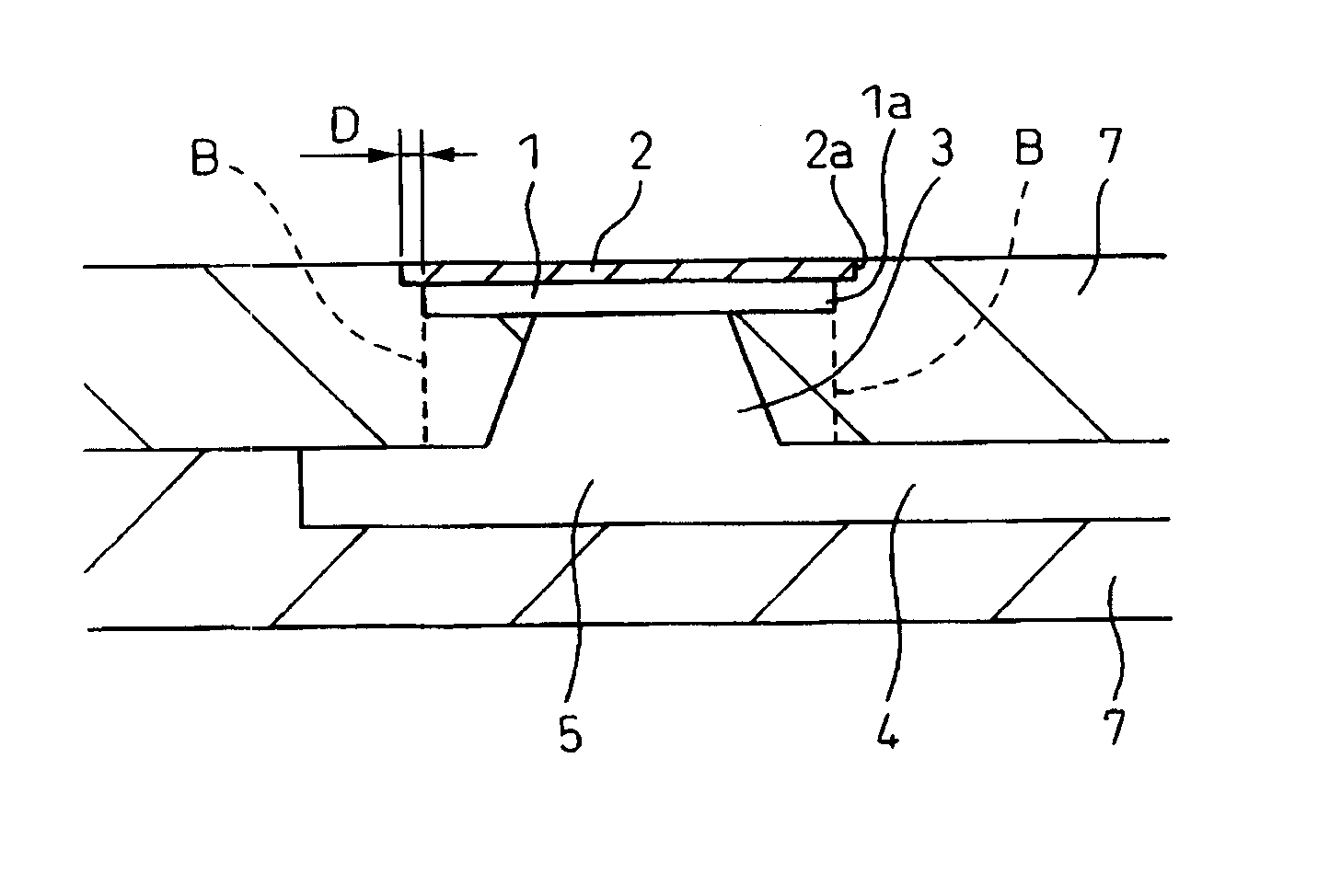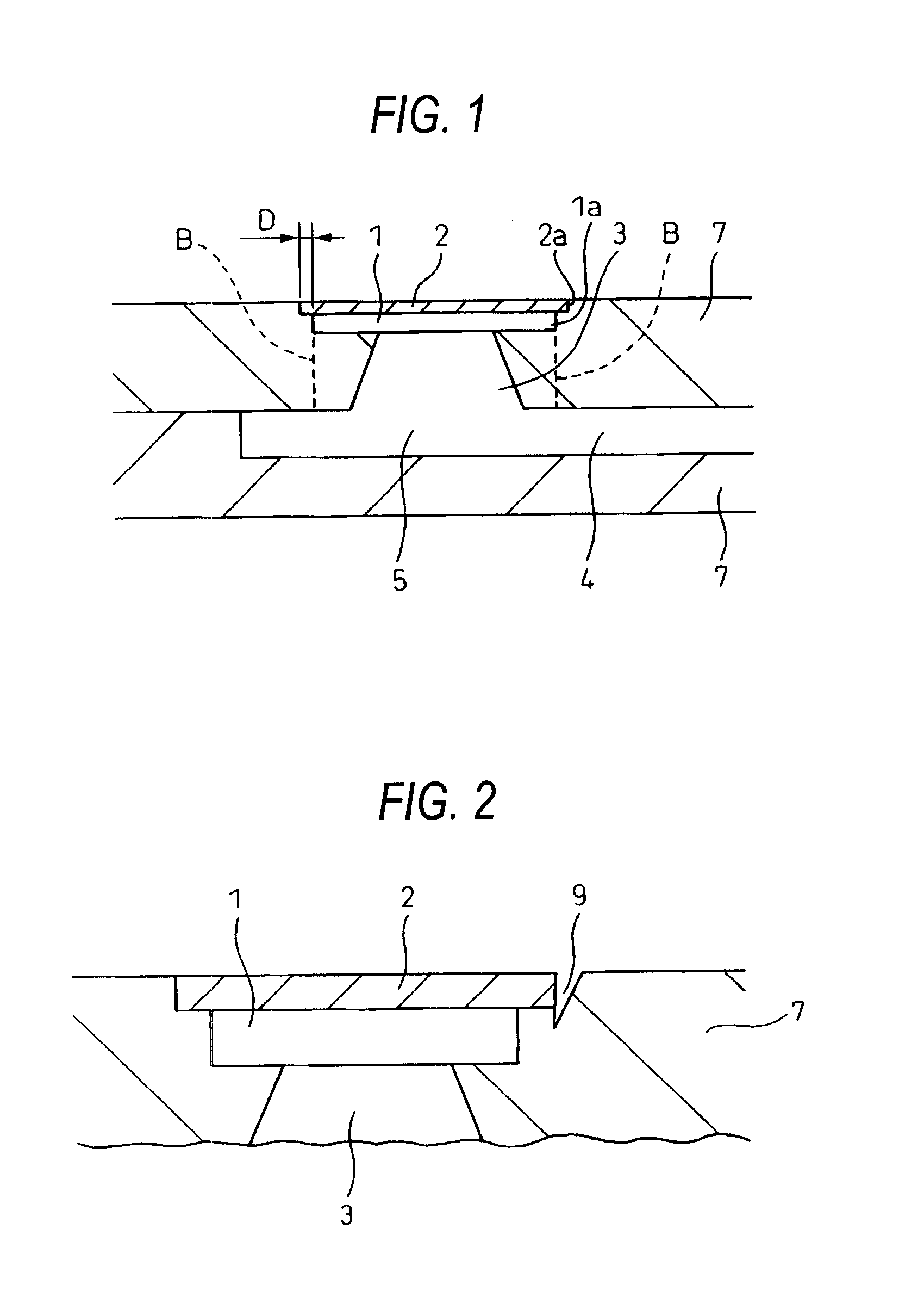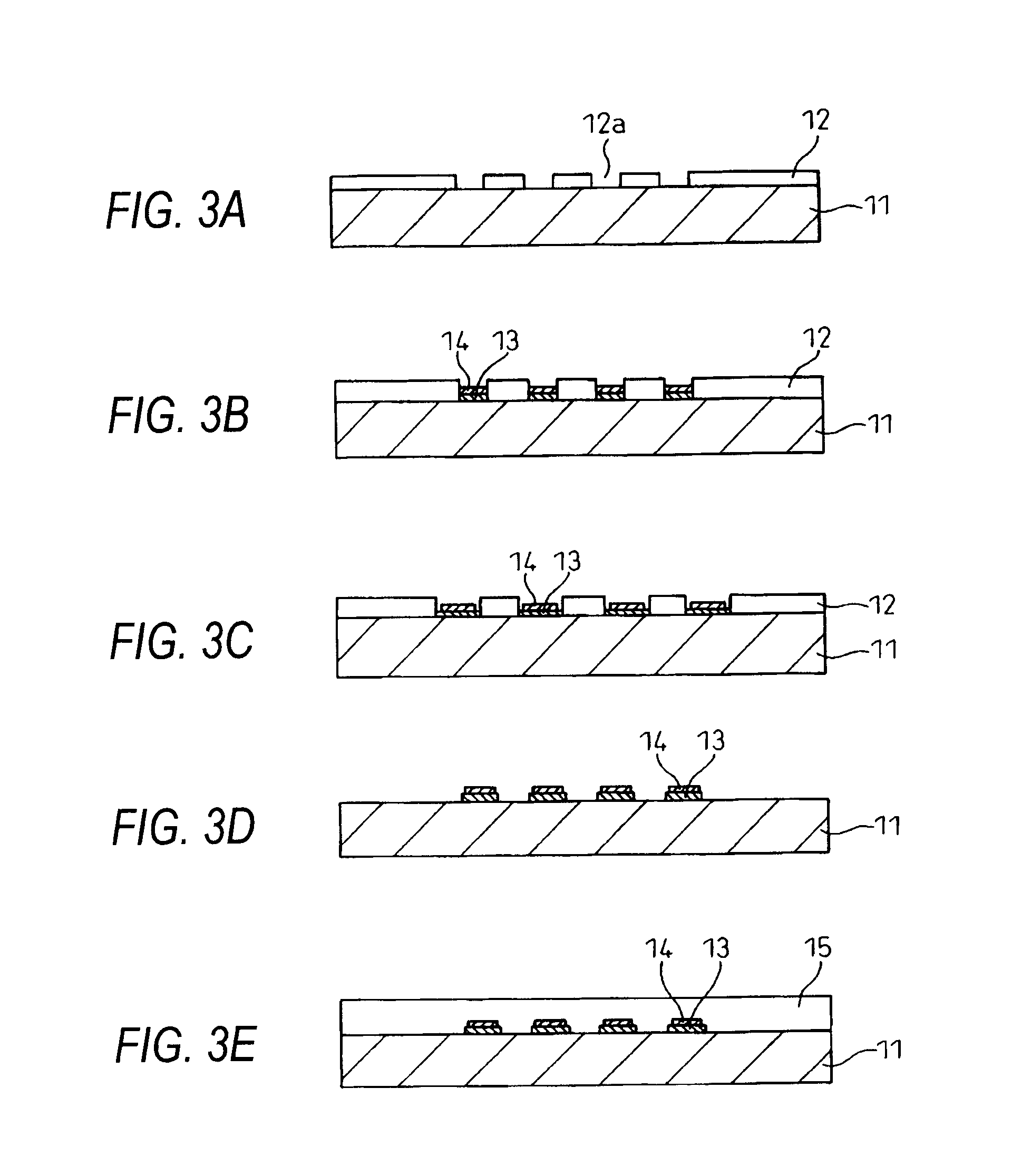Wiring board and method of producing the same
a technology of wiring board and wire, which is applied in the manufacture of cables/conductors, printed circuit aspects, and semiconductor/solid-state devices. it can solve the problems of the miniaturization of the wiring, and achieve the effect of hardly affecting the performance of the wiring board
- Summary
- Abstract
- Description
- Claims
- Application Information
AI Technical Summary
Benefits of technology
Problems solved by technology
Method used
Image
Examples
example 1
[0054]In Example 1, a wiring board in which the surface of a surface plated layer and that of a wiring board are in the same plane will be described together with a method producing it.
[0055]As shown in FIG. 3A, a plate resist pattern 12 which will be used as a mask pattern is formed on the surface of a Cu plate serving as a support member 11. In FIG. 3A, for the sake of simplicity, only the resist pattern 12 on one face of the support member 11 is shown. Actually, also the opposite face of the support member 11 is covered by a plate resist pattern. As the support member 11, other than a Cu plate, a Cu foil or a plate or foil of another metal or alloy which can be removed by a usual etchant may be used. As shown in FIG. 3B, surface plated layers 13 and external connection pads 14 are sequentially formed by electrolytic plating on the support member 11 which is exposed in bottom portions of opening portions 12a (FIG. 3A) (having a diameter of 100 μm) of the plate resist pattern 12. T...
example 2
[0061]Hereinafter, a wiring board in which the surface of a surface plated layer and that of a wiring board are in the same plane will be described together with another method producing it.
[0062]As shown in FIG. 7A, a plate resist pattern 32 is formed on the surface of a Cu plate serving as a support member 31 (a resist layer (not shown) is formed also on the rear face of the support member 31). As the support member 31, other than a Cu plate, a Cu foil or a plate or foil of another metal or alloy which can be removed by a usual etchant may be used. As shown in FIG. 7B, surface plated layers 33 and external connection pads 34 are sequentially formed by electrolytic plating on the support member 31 which is exposed in bottom portions of opening portions 32a (FIG. 7A) (having a diameter of 100 μm) of the plate resist pattern 32. As each of the surface plated layers 33, an Au layer and Ni layer respectively having thicknesses of 0.5 μm and 5 μm are formed in this sequence. The externa...
example 3
[0067]Hereinafter, an example of a wiring board in which a surface plated layer is positioned in a recess of the wiring board will be described together with a method producing it. The materials and dimensions of the members, the processing methods, and the like used in the following examples are identical with those described in Examples 1 and 2, unless otherwise specified.
[0068]As shown in FIG. 9A, a plate resist pattern 42 having opening portions 42a is formed on the surface of a Cu plate serving as a support member 41 (a resist layer (not shown) is formed also on the rear face of the support member 41). As shown in FIG. 9B, surface plated layers 43 (formed by an Au layer and a Ni layer) and external connection pads 44 made of Cu are sequentially formed by electrolytic plating on the support member 41 which is exposed in bottom portions of opening portions 42a.
[0069]After the plate resist pattern 42 is removed (FIG. 9C), the Cu material is selectively etched so that, as shown in...
PUM
 Login to View More
Login to View More Abstract
Description
Claims
Application Information
 Login to View More
Login to View More - R&D
- Intellectual Property
- Life Sciences
- Materials
- Tech Scout
- Unparalleled Data Quality
- Higher Quality Content
- 60% Fewer Hallucinations
Browse by: Latest US Patents, China's latest patents, Technical Efficacy Thesaurus, Application Domain, Technology Topic, Popular Technical Reports.
© 2025 PatSnap. All rights reserved.Legal|Privacy policy|Modern Slavery Act Transparency Statement|Sitemap|About US| Contact US: help@patsnap.com



